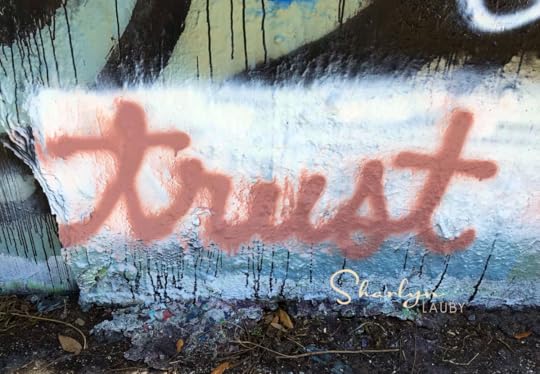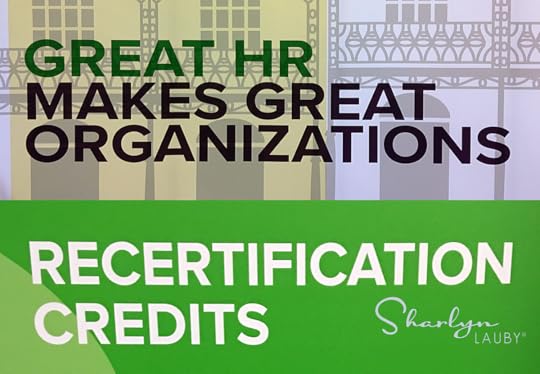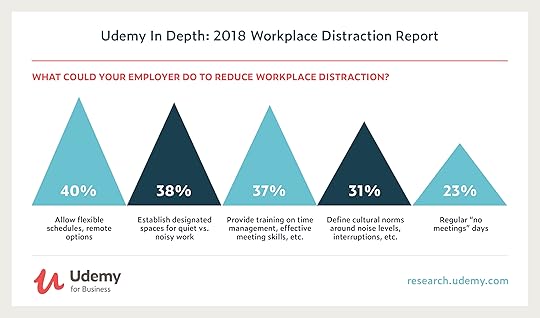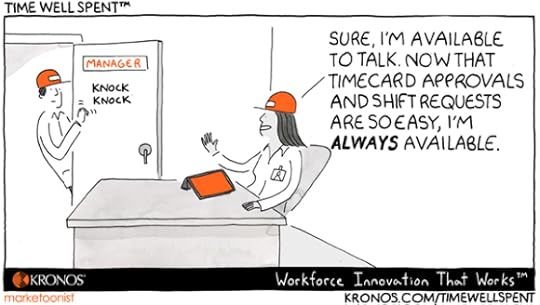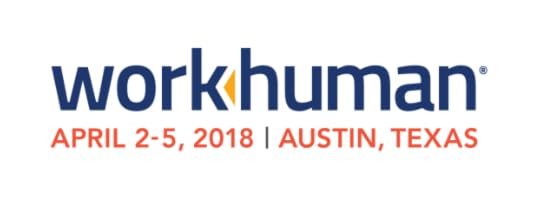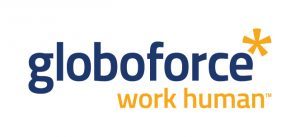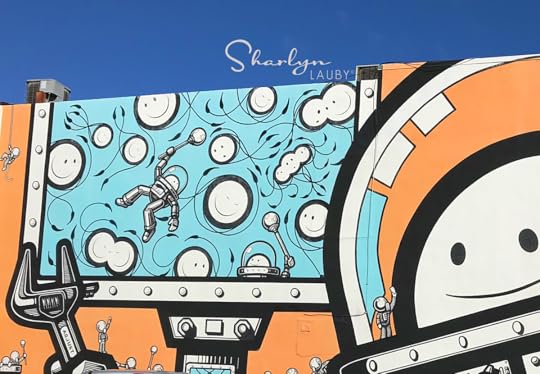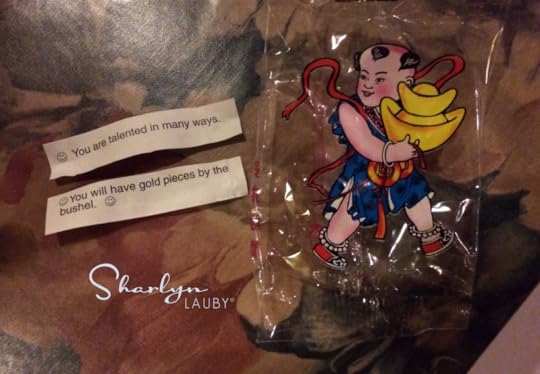Sharlyn J. Lauby's Blog, page 120
April 5, 2018
Your Hiring Process Impacts Your Culture
I like to think that we all know diversity in the workplace produces positive results to the bottom-line. But did you know that people are looking at a company’s diversity as part of their investment strategy? Morgan Stanley has produced a research piece titled “An Investor’s Guide to Gender Diversity”. It outlines their research showing that investors should look at diversity when making stock picks.
I’m not here to tell anyone how to invest their money. Or to invest in the market at all. But the Morgan Stanley piece tells me that investors are looking for ways to identify successful organizations. And diversity is part of the criteria.
This means that human resources and talent acquisition professionals should look at their internal and external hiring practices. Because a biased hiring process can have a direct impact on the bottom-line. How many times have we heard “HR is just a support department.” Or “HR doesn’t impact revenue.” Well, my takeaway from the Morgan Stanley report is, HR has a direct impact on the bottom-line. So, we have to make sure our hiring process is free from bias.
At a TATech event, one of the speakers talked about bias in hiring processes. They shared three things that companies should examine:
Step 1. Identify sources of unconscious bias. At this point, most of us realize that we all have some form of bias. It’s not all bad AND it’s not all negative. For example, someone might say, “Women are too nice.” That could imply that women aren’t as assertive as men or that they can’t handle tough business decisions. Regardless, both the organization and the individuals inside the organization have to identify what information and decisions we have control over. Because without that level of awareness, it can lead us to make bad decisions.
Step 2. Address the company’s talent pipeline issues. Organizations should look at their hiring process and ask some tough questions.
Does the company’s employment brand exclude qualified candidates?
Does the company have a sufficient number and variety of sources? Is the organization reducing the use of gendered keywords in job openings?
Why and how do recruiters and hiring managers use candidate information?
Ask for thoughts /suggestions to create consistency in places like the interview process.
Is the candidate selection process fair and unbiased?
Step 3. Provide education and ask for commitment. This type of process isn’t going to change overnight. And there’s no benefit to guilting or accusing others. The organization needs to remind everyone that they have a leadership role to play in reducing organizational bias. Every employee needs to be trained on how to communicate on the other person’s level. Managers should receive guidance on how to evaluate an employee’s work based on the company standard.
Finding, engaging, and retaining talent continues to be a number one priority for business. That’s because employees are a key differentiator. When I worked in hotels, we knew other hotel companies had what we had: beds, meeting rooms, restaurants, bars, etc. It was our employees that kept guests coming back. It’s the same in plenty of other industries.
Organizations that want to win the war for talent have to realize that the foundation for finding the best people is having the best hiring process. They need to regularly audit and examine what they do, making sure the process allows them to get the best and not exclude anyone.
P.S. If investing in your talent acquisition process is part of the company’s goals this year, you might want to consider checking out the Society for Human Resource Management (SHRM) seminars. I’m facilitating one titled “Talent Acquisition: Creating Your Organization’s Strategy” that covers every touchpoint in the process. Seminars are available in person and virtually. And they’re approved for recertification credits.
Image captured by Sharlyn Lauby at the 34th Street Graffiti Wall in Gainesville, FL
The post Your Hiring Process Impacts Your Culture appeared first on hr bartender.






April 2, 2018
Choosing the Best HR Certification – Ask #HR Bartender
One of the ways that HR professionals can demonstrate their knowledge, skills, abilities, and commitment to the profession is by obtaining a certification. But which one? That’s what today’s reader wants to know.
I’m trying to break into the HR field. There’s a lot of information on the SHRM and HRCI certification programs, but I wanted to know if there are any other certifications that would make a candidate more attractive to an employer. For example, I know the CEBS is for benefits but are there any certifications that would show an expertise in the field of training, employment laws, or general HR for healthcare professionals?
I completely understand the confusion. There are quite a few certifications related to human resources. Mind you, I’m not viewing this as a bad thing. Competition can translate into a high-quality standard. But it does mean, for individuals looking to obtain certification, you need to ask yourself a few questions such as:
Why get certified?
What does it take to achieve certified status?
How does the credentialing organization support certified members?
What’s the criteria for maintaining certification?
But going back to answer the reader’s question, here’s a list of the certifications I’m aware of. If you know of some others, drop us the info in the comments. Let’s put together a good list of the certifications that HR pros should consider depending on their area of focus.
Society for Human Resource Management (SHRM) offers two credentials: the SHRM-SCP and SHRM-CP. Both credentials are based on the SHRM Competency Model.
Human Resources Certification Institute (HRCI) offers seven different credentials, based on their human resources body of knowledge.
Certified Employee Benefits Specialist (CEBS) programis housed by the Wharton Executive Education Center at the University of Pennsylvania.
American Staffing Association has four certifications focused on staffing and sourcing.Two of them have an industry focus – one in health care and the other in technology.
TheAssociation for Talent Development (ATD)offers two credentials: Certified Professional in Learning and Performance (CPLP) and Associate Professional in Talent Development (APTD). Both are based on their competency model.
The American Payroll Association offers a Certified Payroll Professional (CPP) program.
WorldAtWork offers a Certified Compensation Professional (CCP) program.
The International Association for Human Resource Information Management (IHRIM) offers a Human Resources Information Professional (HRIP) certification.
In addition to certifications focused on the human resources profession, there are industry groups that offer certifications. For example, the American Society for Healthcare Human Resource Administration (ASHHRA) offers certifications. So does the American Hotel and Lodging Association (AHLA).
Obviously, no one can tell a person which certification to get. We can simply put the information out there and each individual needs to evaluate what is best for them and their career. That being said, there is one thing I do want to address. The reader in this case mentioned the best credential to get a job. And I totally get it. You want to get a credential that benefits your career.
Any organization that offers a credential should be able to share with you how employers feel about the credential. So, don’t be afraid to ask the question.
I’ve always said that your credential will mean more to you than anyone else. I still believe that. But that doesn’t mean you shouldn’t do your homework and get the credential that works best for your career and future.
Image captured by Sharlyn Lauby after speaking at SHRM Annual in New Orleans, LA
The post Choosing the Best HR Certification – Ask #HR Bartender appeared first on hr bartender.






March 30, 2018
Workplace Distractions Are Impacting the Bottom Line – Friday Distraction
I know the open office concept is all the rage right now. And I’m not opposed to it. I can see the advantages it brings in terms of collaboration and team development. However, it’s important for organizations to realize it can also contribute to workplace distractions. The same is true for technology. I love my tech gadgets and toys as much as the next person, but they can also be distracting.
Udemy sent me their 2018 Workplace Distraction Report and I thought it was a super interesting read. Not necessarily from the standpoint of establishing that the workforce is faced with constant distractions from their work and technology – I think we know that. But the report goes into how people feel when they get distracted. Employees say that constant workplace distractions hurt morale, productivity, and, ultimately, performance. This should be of concern to business leaders everywhere.
The other aspect of the report that I found interesting was that people felt training could help to resolve some of these issues. Is it possible that topics like mindfulness could assist in this area? Other activities that employers could do to help reduce workplace distractions include flexible scheduling and “no meeting” days.
If your organization hasn’t done it already, here are three actions to consider:
Define cultural norms about noise. What’s noisy in your company? I know people who work with the music playing in the background. They don’t think that’s noisy. Other people do. Companies need to define this up front and set expectations.
Establish “quiet zones” in the workspace. No one wants to stop employees from sharing a laugh at work. But when a group of employees are having some much-needed fun while someone next to them has their head down trying to finish an important report for a major client, it’s distracting. Designate places where employees can hang out, relax, and not disturb others.
Give employees the ability to wear noise reduction/blocking headphones. I’m actually hearing about companies that give new hires a “headphone allowance” to pick out a set of work headphones that will help them reduce distractions. I think this has the potential to be a win for everyone.
If you want to see all of the research, you can download Udemy’s 2018 Workplace Distraction Report in its entirely from their website.
Whether you work in an open office, noisy office, or a virtual office, workplace distractions can impact everyone. Organizations need to take steps to ensure employees are able to be productive and perform at a high level.
Image captured by Sharlyn Lauby after speaking at the SHRM Annual Conference in New Orleans, LA
The post Workplace Distractions Are Impacting the Bottom Line – Friday Distraction appeared first on hr bartender.






March 28, 2018
Every Bias Is Not Necessarily a Bad Bias
That was my takeaway from David Rock’s presentation on The Neuroscience of Breaking Bias from last year’s Society for Human Resource Management Annual Conference. All biases are not bad. But that doesn’t mean we shouldn’t address them.
Here’s why: Think of bias as our tendency to generalize or group people or information. Each of us gets our biases from a different place, so we can’t treat all biases the same. In fact, there are even biases in the way we approach bias.
As a result, biases are a part of our lives and that’s not necessarily a bad thing. One of the reasons we might want to embrace our biases is because, as humans, we do not have enough cognitive bandwidth to make every decision from ground zero. So, whether it’s consciously or unconsciously, we need and use our biases (i.e. generalizations) as a starting point. And when used properly, many of our biases can be used for good. The key word here being “properly”.
However, it could be said that there might be times when we want to reduce our biases. The answer isn’t to eliminate ALL bias. Reducing and/or eliminating bias is difficult. Again, if we want to reduce bias, there are two conditions that need to exist:
We can’t reduce bias on an individual level. Rock explained it’s a biological constraint. The example he used was our pancreas. We have a pancreas and it’s working, but we really don’t think about it on a regular basis. Bias can be viewed as the same thing. It happens and we really don’t realize it’s happening. That’s why we can often see others’ biases even if we can’t see our own.
That being said, we can change bias in individuals with awareness and motivation. However, awareness alone isn’t necessarily a solution. We have to keep in mind how our brains work. As much as we want to believe we’re excellent multitaskers, the bottom line is we can only do one thing well at a time. For example, we can’t add and multiply at the same time, but we can do it sequentially.
Let’s use the same philosophy for bias. We can’t eliminate all of our biases while we’re thinking about our biases along with the rest of our lives. So, Rock suggests the way to reduce bias is to create a process that results in less bias. By creating a process, organizations build teams that will notice and mitigate biases.
We’ve talked before about the need for organizations to develop their internal teams. I see training team members on effective ways to build processes as being a part of team development.
But this raises another challenge. We’ve both seen the articles about the ineffectiveness of “bias” or “diversity” training efforts. Rock recommends getting rid of the label of “bias” or “diversity” training since it can create a negative bias. In addition, he suggests not identifying these types of programs as “mandatory” because it further conjures up a negative bias. Rock’s suggestion was to just say the training helps people “make better decisions”.
I’d like to think that organizational teams understand that diversity helps them perform better. But make no mistake, it’s hard work because there can be moments when it’s uncomfortable. Through training, teams can learn how to create their own “habits” or processes to break their biases and hold each other accountable. Ultimately, that takes trust and feedback.
Image captured by Sharlyn Lauby at the 34th Street Graffiti Wall in Gainesville, FL
The post Every Bias Is Not Necessarily a Bad Bias appeared first on hr bartender.






March 27, 2018
Organizational Trust Is the Key to Innovation
(Editor’s Note: Today’s article is brought to you by our friends at Kronos , a leading provider of workforce management and human capital management cloud solutions. For the first time, Kronos was named according to global research and consulting firm Great Place to Work. Congrats to them! Enjoy the article.)
Just in case you don’t recall, back in 2013, I had the opportunity to interview Kronos CEO Aron Ain about innovation. The reason I’m bringing this up is because during the interview, Ain commented that the goal of any company should be to “innovate themselves out of business”, meaning that companies should continuously strive to develop that “thing” – whether it’s a product or service – that, if someone else created it…it would put them out of business.
Think of the concept like disruption, but within your own company. Little did I know at the time, that Kronos was taking that goal seriously (and literally).
At last year’s KronosWorks, Aron Ain shared with the crowd of 3,000 customers, partners, and Kronites the project that the company has been working on. The idea was simple. The company wanted to understand what it would take to put themselves out of business. So, they decided to challenge themselves.
Project Falcon: Innovate the Company Out of Business
Before I share with you the results of their challenge, I want to share with you how they got there. I think it’s quite remarkable. Kronos put together a diverse group of people, gave them office space 20 miles away from their Massachusetts headquarters, a budget of $5M, and one year.
Kronos let the group operate independently as their own start-up, including selecting their own name. The group decided on Project Falcon to represent the fast-flying, agile, bird of prey capable of striking quickly. The group’s mission was to “irritate each other, in a nice way”. It was to discover what technology would eclipse what Kronos was currently doing. Then, create it themselves.
Not every business has the culture to pull this off. Less than half of global professionals trust their employer, boss, or team/colleagues, according to the “EY Trust in the Workplace Study”. If trust doesn’t exist, there’s no way that business projects like Project Falcon can take place. If managers and employees cannot trust each other, the project would never get off the ground.
However, that doesn’t mean there aren’t moments of concern. Ain said he would go check-in with the group every six weeks or so. He confided to the crowd at KronosWorks that there were times that he was “worried but supportive”. I asked Bill Bartow, vice president of global product management at Kronos, what kept management from jumping in and directing the project. “The Kronos culture is built on a strong foundation of trust and transparency. This is necessary to foster an environment that encourages the bold thinking and calculated risk-taking required to drive real innovation. Aron specifically challenged the original ‘Falcon’ team to put Kronos as we know it today out of business. We can be that bold because all Kronites are trusted to act with the best interests of our customers and each other at heart. Without a culture that provides that sense of empowerment, the game-changing breakthroughs we made with Workforce Dimensions wouldn’t have been possible.”
Bartow’s comment reminded me of the quote in the book “Creativity, Inc.” from Pixar CEO Ed Catmull. “It’s not the manager’s job to prevent risks. It’s the manager’s job to make it safe to take them.”
So, what was the result of Project Falcon? It’s called Workforce Dimensions, a smart solution that allows organizations to best manage and engage their workforce.
Workforce Dimensions: A Smart Solution for Your Organization
Workforce Dimensions helps organizations eliminate the time-consuming burden of critical workforce processes such as timekeeping, scheduling, leave management, and workforce demand forecasting. It does this through assistive artificial intelligence (AI) and machine learning.
Managers have one-touch, real-time access to information and data on any device. This allows them to be proactive (versus reactive) in making workforce and human capital decisions. It also includes compliance. Imagine a workplace where managers would never have to resolve a time clock punch exception because the exception wasn’t generated in the first place because the employee was reminded to punch-in and punch-out via their mobile device.
And, all of this would take place in the secure cloud.
Chris Mullen, fellow Workforce Institute board member and human resources director at the University of Colorado Boulder is an early adopter of Workforce Dimensions and shared his thoughts. “At the University of Colorado Boulder, we are seeking to further empower our employees while improving their experience with workforce management. We partnered with Kronos on the early adopter program because Workforce Dimensions goes well beyond timekeeping to improve the employee experience, the supervisor’s experience, and provides benefits to our organization like increased compliance, ease of use, and analytics for better decision making.”
Trust Creates Opportunities for Technology
I’ve always said that the future of work means organizations have to get comfortable with allowing technology to do what it does best. So, people can do what they do best. The only way that’s going to happen is if trust exists. This extends to the customer experience as well.
“To fully prepare for Workforce Dimensions, Kronos challenged itself to innovate everywhere,” said Jennifer Dearman, vice president of customer success at Kronos. “To make sure that organizations have an optimal experience with Workforce Dimensions, we have reimagined our approach for every customer interaction starting with onboarding and continuing through deployment, education, and support, just to name a few key areas. It was important for us to take a fresh look at everything that happens around Workforce Dimensions to help our customers drive user adoption within their organizations. This ensures they achieve the outcomes they desire.”
I was really impressed with the Workforce Dimensions story and solution. If you want to check it out (and I hope you do), visit the Kronos site and request a consultation.
The post Organizational Trust Is the Key to Innovation appeared first on hr bartender.






March 25, 2018
Employees Are Not Seeing Their Feedback Turned Into Results – Ask #HR Bartender

You’ve heard me say before that one of the worst things organizations can do is ask employees for feedback and then not do anything with it. This HR Bartender reader knows it’s true and is wondering what to do about it.
About four months ago, I incorporated ‘Feedback Friday’ at my organization, and have received very positive comments. However, I still struggle on what to do with the results, besides just sharing them.
Now I’m getting feedback like ‘Is there anything that will be done with these results?’. Even though their concerns are being addressed, employees can’t really see what is happening internally, so they’re not seeing the change.
Last year, I worked with our friends at Readex Research on a post about “HOW TO: Turn Your Employee Engagement Survey Results into Action”. So, I asked Readex CEO Jack Semler if he would help me answer this reader’s note. Thankfully, he said “yes”.
Jack, we don’t know exactly the structure of this company’s “Feedback Friday” sessions, but in general, why are feedback sessions a good idea?
[Semler] Individuals within an organization want to feel that they contribute in more than just one way, more than just doing work. Another means to do this is sharing ideas and feedback. So, listening to what employees have to say gives them another path to contribute to the organization. Of course, it makes good business sense to listen anyway. Management doesn’t have all the good ideas.
Why should organizations care about making sure employees see the results of their concerns being addressed?
 [Semler] When employees take the time, make the efforts, and in some cases muster up the courage, to offer feedback, they do so with hopes something will happen. This isn’t to say something will always happen after offering feedback, but they hope to make a difference in some way. This said, organizations need to close the loop. They need to share results to let employees know they have been heard.
[Semler] When employees take the time, make the efforts, and in some cases muster up the courage, to offer feedback, they do so with hopes something will happen. This isn’t to say something will always happen after offering feedback, but they hope to make a difference in some way. This said, organizations need to close the loop. They need to share results to let employees know they have been heard.
I believe this reader is doing the right thing by sharing results. However, we don’t know how they are sharing results. Name 1-2 things that HR departments need to consider when sharing employee feedback.
[Semler] I’ll give you three things to consider:
Keep the feedback general in nature to protect confidentiality. This means ‘aggregating’ what has been heard.
If you have numbers (like percentages), use charts, pictures and graphs to tell your story. Good visuals help communicate quickly. Assuming the information will be broadly shared or disseminated, using visuals can help tell the story without you being there.
If you have a lot of feedback in the form of comments, spend time going through a coding process to turn those comments into numbers.
For example, let’s say you receive the following comment: ‘I really like my manager and she does a great job, but management really hasn’t given me a clear picture on where we are going.’ This comment can be ‘coded’ into two themes: Manager does a good job, management needs to share the vision. By coding comments, you can more easily share with others and track numerically the key ideas that are being brought forward.
How can organizations communicate that they’ve done something with employee feedback, even if they aren’t ready to work on the issues?
[Semler] This is really simple and dovetails with the last question. Organizations need to carefully review what has been learned through employee feedback, then analyze, tabulate and be as transparent as possible. Transparency and honesty must prevail. If there are issues that have come up through feedback that need attention, but must wait for whatever reason, say so! Employees will be patient if they have the straight story.
Last question. If a company receives feedback that they just can’t implement – maybe it’s too expensive or just doesn’t make sense for the business – how can they tell employees that they’re listened but they’re not going to do it?
[Semler] Well, preparing for this possibility starts at the start. Before implementing a feedback/listening process, tell employees that:
1) The organization does care and does want to listen but,
2) May not be able to act on everything.
There really are ideas and suggestions that come through via feedback that don’t make business sense for many reasons. You can also set a rule, the rule being that employees that make suggestions or offer feedback can follow-up. If someone has offered an idea and nothing has happened, let employees know they can ask their manager or other designated person why nothing has happened and get an explanation. This takes us back to honesty and transparency.
A huge thanks to Jack for sharing his expertise with us. If you want to learn more about sharing employee feedback, check out the Readex Research white paper on “3 Tips for Presenting Employee Survey Results”.
Employees have a lot of great ideas to improve the workplace. Organizations would benefit from their knowledge. But if you want employees to give their ideas freely, then they need to see that the company is going to take them seriously.
Image captured by Sharlyn Lauby somewhere off the coast of Miami, FL
The post Employees Are Not Seeing Their Feedback Turned Into Results – Ask #HR Bartender appeared first on hr bartender.






March 23, 2018
Managers Need to Understand Priorities – Friday Distraction
One of the things I like to do when I travel is read. Especially on flights. I figure it’s a good use of my time because I might not have access to WiFi. The same is true in the office. I try to schedule my day, so I can do work that requires a lot of concentration during times when I feel I will be interrupted less. It’s all about understanding priorities and optimizing schedules.
Today’s Time Well Spent from our friends at Kronos reminds me that this is also true when it comes to changing priorities and making time for employees. Sure, managers will schedule one-on-one meetings with their team, but sometimes conversations need to happen outside of regularly scheduled meetings. And managers need to find time to accommodate them.
Create “open office” hours. Remember how college professors would post times when they would be sitting in their office waiting for students to stop by? Well, if you’re a manager who has lots of meetings and off-site events, consider setting up office hours. That way, you can be available for employees and they know when to expect you.
Practice management by walking around (MBWA). Instead of making employees find you, add a morning or afternoon routine that allows employees to see you. Maybe in the morning you can grab a coffee and just walk around. Stop and say hello. Start casual conversation. Employees will appreciate it. And you might learn a few things too.
Stop by “happy hour”. I understand the reluctance of hanging out and having an adult beverage with colleagues. But sometimes being friendly can be a great relationship builder. I can also tell you from experience that many times, employees would say to me, “I’m glad you’re here. I have this issue and I’ve been hesitant to stop by HR.” So, grab a club soda and find out what’s going on. You can always leave early.
Use technology strategically. Today’s tech allows organizations to automate and scale many tasks. The cartoon mentions timecard approvals, but there are many more. It brings consistency and frees up manager time. So, they can spend it with employees. It’s a huge benefit to the business.
Once managers understand that making time to talk with employees is one of their top priorities, they will look for ways to build that into their schedule. That includes changing the way they manage their time and looking for technology to help them reduce boring, repetitive tasks. And that’s a win for everyone involved.
The post Managers Need to Understand Priorities – Friday Distraction appeared first on hr bartender.






March 22, 2018
How to Find Budget Dollars for Employee Recognition
Let’s face it. Sometimes as much as HR and the organization want to create and implement a program, the resources simply aren’t available. As a result, we have to resort to the “no-cost, low-cost program options”.
I thought about this as I was planning my agenda for this year’s WorkHuman Conference, pioneered by Globoforce. I’ve been to every year since its inception and it continues to get better. This year’s conference is being held April 2-5, 2018 in Austin, Texas. And it’s not too late to join us! (Check out the promo code at the end of this post for a discount.)
Anyway, back to the conference. I saw that one of the sessions this year was titled “Show Me the Money: 5 Unexpected Places to Find Recognition Budget” and reached out to the speaker Rob Schmitter, solutions architect at Globoforce, to see if he would give us a sneak peek. Thankfully, he said “yes”.
Rob, I’d like to think that everyone understands recognition is important. But I could see some organizations questioning whether or not they need a “formal” program (versus an informal one). What’s the one statistic that can help companies start to consider formal recognition?
 [Schmitter] For me, it’s less about a statistic and more about a realization. If you want better business outcomes (less attrition, more engagement, higher sales, more profit), then create a better employee experience. Products and services will come and go, but it’s your employees that are the constant and the driving force behind those products and services. They don’t invent themselves.
[Schmitter] For me, it’s less about a statistic and more about a realization. If you want better business outcomes (less attrition, more engagement, higher sales, more profit), then create a better employee experience. Products and services will come and go, but it’s your employees that are the constant and the driving force behind those products and services. They don’t invent themselves.
It stands to reason that more engaged employees deliver better products and are more likely to ‘Wow’ your customers. That’s what drives better business outcomes. Companies that focus on human workplace practices like trust, relationships, feedback, empowerment, growth and appreciation consistently out perform their competition because their employees are more engaged.
To me, the first step in implementing any program is conducting an internal assessment. How can organizations conduct an assessment of their recognition programs?
[Schmitter] Conducting an internal assessment of existing recognition programs can be a difficult task. Here are three things to keep in mind:
Know where to look.
Get the full cooperation of those owners to come clean in terms of activity and spend.
Realize you’ll never identify everything, especially when a formal, centralized program does not exist.
I’ve seen some pretty clever (and sneaky) rouge programs over my 30 years of total rewards experience. That said, I do have 3 favorite places to look first.
Finance. Specifically, manager and employee expense items that can’t clearly be categorized or understood.
Compensation. Any ‘one-time’ employee payment should be clearly understood and pay close attention to the ‘Other’ category. Most organizations have one and this can be a gold mine.
Payroll. What payments do they see that look suspicious in nature?
There are plenty of other places to look too, but these are your best bets. Oh, one last thing, whatever dollar figure you come up with in terms of spend, triple it! That’s what our research suggests the real spend is…
I don’t want to give away your session during the WorkHuman Conference, but one of the things you’re going to discuss is how to get the budget for recognition programs. Are there any assumptions that HR pros need to keep in mind when asking for budget dollars to implement a recognition program?
[Schmitter] During the conference, I will be sharing 5 places that can help fund your recognition program and it’s very unlikely that just one will provide all the dollars you need. In fact, sourcing budget is generally an exercise in identifying or shaving off a little budget from a multitude of sources.
All that said, getting approval to invest in a recognition program almost always comes down to return-on-investment (ROI), as it should – organizations can’t afford to invest in just a ‘feel good program’. It has to deliver some value back to the business. The good news is that the investment in recognition, on a per employee basis, does just that.
I believe the return on the investment ratio just can’t be beat with any other HR management tool. We have some great case studies (and will be sharing a couple more during WorkHuman) that demonstrate some impressive results and it’s that kind of data that will ultimately get your investment approved.
Unfortunately, the reality of business is that we don’t always get everything we ask for. But in the case of recognition, having a program turned down can be perceived as the company saying, “it’s not important”. How can senior leaders balance recognition with budget demands?
[Schmitter] I think the conversation is finally moving away from recognition not being important. More and more senior leaders realize now the opportunity that a strategic, social recognition program presents. The research and results just can’t be ignored anymore.
That said, having your program funding request denied is still a reality and more likely due to poor program strategy and design versus the idea that recognition is not important. To overcome the budget approval obstacle, make sure that your program can demonstrate real ROI. Take on some big HR or business objectives and design a thoughtful program around those objectives. Be sure to have your success measures in place and documented when you go for approval. Just like you have a compensation strategy, you should have a recognition one too.
Last question. Even though we’re talking about how to get budget dollars, what’s one “no-cost” recognition strategy that organizations can implement, while they’re trying to get the budget?
[Schmitter] I’ve always thought that one of the best forms of recognition is to be a great listener. It acknowledges to others that you hear them and that what they have to say is important. You may not agree with it, but the simply act of not being dismissive or uninterested tells others that you appreciate them, that they have a voice and that they belong in the conversation. It feels good and is cost free!
My thanks to Rob for sharing his ideas. If you’re not already subscribed to the Globoforce blog, take a moment to check it out. And as promised, you can use promotion code WH18INF-DBU to get a little discount on your WorkHuman Conference registration.
We spend a lot of time on this blog talking about the increased focus on employee engagement and retention. Part of the way organizations can create an engaging culture and keep employees is by recognizing them.
The post How to Find Budget Dollars for Employee Recognition appeared first on hr bartender.






March 20, 2018
4 Things Companies Need to Compete In a Digital World
I recently flew from Fort Lauderdale to Los Angeles. It’s a five-hour flight. The WiFi was down. Sad to say, I (and a whole bunch of other passengers) had no clue what to do with our time. If I had known, I could have brought a book with me. I’m just so used to occupying my time with my iPad. I mean, technology is wonderful. I can order my favorite sub sandwich using an app on my phone. I can deposit checks. There are so many things we can do. Of course, that’s when it works.
But it got me thinking. Every business today is a part of the digital world we operate in. You don’t have to be a technology company to be a part of our digital world. It also means that companies need to figure out how to compete for business. And I don’t mean complete against technology companies, although that could be the case. Think of compete in the sense of competing for attention.
I recently attended a conference where the speaker talked about four things that companies need to compete in the digital world.
Innovation: I recently wrote a post about Teresa Amabile’s article on Harvard Business Review about encouraging everyday creativity. Those little acts of creativity can yield big organizational results. But it involves more than saying, “Poof! Be creative now.” Organizations need to create environments where employees feel their ideas are welcome and supported.
Utilization: This is the actual technology. Organizations want technology that automates boring and repetitive processes along with scales for cost-efficiency. Companies don’t have to be early adopters. They do need to be effective adopters. Regardless of what you’re in business to provide, it’s essential to use technology when it makes sense.
Customer Experience: Organizations need to always be striving to understand what customers really want. Ultimately, they want to partner with customers. That partnership will do a couple of things: 1) customers will share their wish list of improvements for the product or service, 2) if you take care of your customers, they will refer their friends.
Employee Experience: Speaking of partnerships, companies should look to partner with their employees. It’s about designing jobs that employees want to apply for, creating engagement, and forming a trusting positive relationship between managers and employees. Employees should be well trained to use the company’s technology and understand the value of the customer.
These four components create the company’s financial strategy. Innovation drives operational strategy. Technology fulfills that strategy. Employees implement the strategy. And customers buy-into the strategy (both literally and figurately). Think of them like a table. They all need to be there in equal parts or the table will be wobbly.
Business competition continues to be great because of the war for talent. People are a key differentiator in business. As finding talent gets tough, competition increases. Organizations that want to actively compete will need to spend time thinking about how technology plays a role in their innovation, utilization, customer and employee experiences.
Image captured by Sharlyn Lauby while exploring the streets of Hollywood, FL
The post 4 Things Companies Need to Compete In a Digital World appeared first on hr bartender.






March 18, 2018
Should HR Give Employees Advice – Ask #HR Bartender
Let’s face it, human resources professionals often know personal things about their employees, like how much money they make. As a result, it can be tempting to want to help employees tap into community resources. That’s not a bad thing, if it’s done the right way. Today’s reader note wants to know more about how to help their workforce.
I work in employee relations/training department for an organization in the human services/non-profit field. I’ve been doing some research to find resources for HR professionals, like myself, who primarily employ and support staff who are often living close to or below the poverty line.
Generally, I’m looking for resources or best practices on providing and informing staff of community supports. For example, we link our employees to information about subsidized child care resources, job training, etc. We do have an employee assistance program (EAP) which is heavily utilized, but I often feel like our employees could use supplemental information. Any thoughts on some written resources I can reference?
Because there’s the opportunity to cross over into legal issues, I asked our friend Heather Bussing if she would lend her experience and thankfully she said “yes”. Heather is an employment attorney and regular contributor at HR Examiner. You know her from this post about the importance of job references. (It’s still one of my favorites.)
Please remember that Heather’s comments shouldn’t be construed as legal advice or as pertaining to any specific factual situations. If you have detailed questions, they should be addressed with your friendly neighborhood labor and employment attorney.
Heather, thanks so much for helping with this reader note. Let’s start with EAPs. For those readers who might not be aware, what’s an employee assistance program and why should organizations offer them?
[Bussing] Many organizations provide Employee Assistance Programs (EAPs) to employees and often their families and domestic partners. The programs available vary widely, but usually include resources and referrals for substance abuse, counselling, and community resources for health and family care issues. Some companies offer access to an advice nurse, help with adoption, daycare or elder care resources, and some provide even provide assistance gender identity issues. The nature and extent of the programs depend on the employer’s size, commitment to the program, and ability to pay for the services.
I completely understand this HR pro’s situation. I’ve worked places where the majority of employees worked for minimum wage, which was very close to poverty. Before we talk about what options are available, in general, are there any words of caution that HR needs to consider before giving employees advice?
[Bussing] In many places, working for minimum wage is poverty. Most people cannot survive on a minimum wage job without family and public assistance.
Not being able to afford healthy food, reliable transportation, daycare, and basic necessities quickly becomes an HR problem because people have trouble showing up for work and staying healthy. The stress of poverty is something that many employers don’t understand or appreciate. And it disproportionately affects women and people of color.
So before giving someone advice, make sure you truly understand their situation, what is needed, and how you can effectively help. It’s easy to make assumptions about what someone else should do based on our own experiences, when the truth is that the situation is often more dire than you can imagine.
Are you aware of a place where individuals could find out what community assistance programs are available? I must admit I couldn’t think of one place that centralizes all of that information. It’s all over the place based on the type of need (i.e. food, shelter, financial, medical, etc.)
[Bussing] There is rarely a central place where people can learn about community resources because some are offered by local, state or federal government, and others are provided by nonprofits, churches, or neighborhood organizations. Sometimes a community will have a central resource that can refer people to the organizations they need. But usually, it’s a research project.
Start by searching ‘human services’ agencies, ‘community action’ organizations, ‘health clinics’, ‘public housing’, and ‘food banks’. Find out if they keep a list of other community resources and talk to someone at each of them so you understand what they do, who qualifies for help, and how to participate and include this information in your list of resources.
If HR were to inform employees about options they can research and apply for, are they liable if something happens such as the employee is denied support or feels they’ve been discriminated against?
 [Bussing] If HR and the employer do not control the decision making or provide the actual services, they will generally not be liable. But when employees are struggling, it often creates attendance and performance issues that can result in adverse employment actions that may be discriminatory if race, gender, religion, age, or other protected factors are involved and a motivating factor in the decision. Issues can also arise that fall under the Family and Medical Leave Act (FMLA) or Americans with Disabilities Act (ADA). So, before you discipline or terminate someone who is having difficulty because of poverty, understand it is often the symptom of a deeper difficulty that may be improved with assistance by the employer or community resources.
[Bussing] If HR and the employer do not control the decision making or provide the actual services, they will generally not be liable. But when employees are struggling, it often creates attendance and performance issues that can result in adverse employment actions that may be discriminatory if race, gender, religion, age, or other protected factors are involved and a motivating factor in the decision. Issues can also arise that fall under the Family and Medical Leave Act (FMLA) or Americans with Disabilities Act (ADA). So, before you discipline or terminate someone who is having difficulty because of poverty, understand it is often the symptom of a deeper difficulty that may be improved with assistance by the employer or community resources.
Last question. For organizations that are in this position, is there anything they can do to help the situation?
[Bussing] Always start with what your own organization can do. Even if raises aren’t possible, offering other kinds of benefits often are. Sometimes something as simple as providing employees with a public transportation pass can make all the difference. And when the employer provides the transportation, they can often take advantage of tax savings and other governmental incentives for doing so.
Starting a garden, organizing clothing exchanges, especially for kids’ clothes and shoes, and offering flexible hours can all help and don’t cost a lot to do.
I want to extend a huge thanks to Heather for sharing her thoughts and expertise. This isn’t an easy subject. Heather’s comment to look inward first is spot on. I can see where that would apply to individuals as well as organizations.
Human resources has the opportunity to make employees lives better, both from creating internal change as well as communicating external resources. But it takes empathy and education.
Image captured by Sharlyn Lauby after speaking at the MBTI Users Conference in San Francisco, CA
The post Should HR Give Employees Advice – Ask #HR Bartender appeared first on hr bartender.






Sharlyn J. Lauby's Blog
- Sharlyn J. Lauby's profile
- 10 followers


